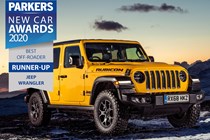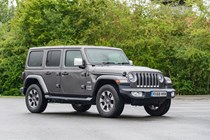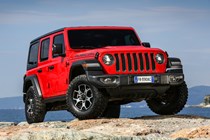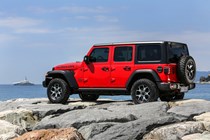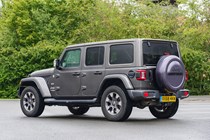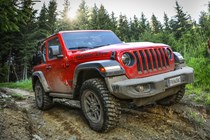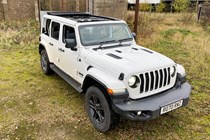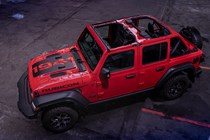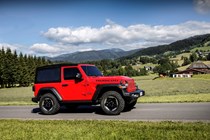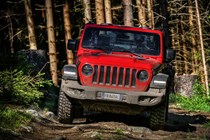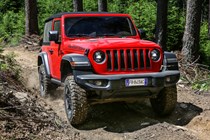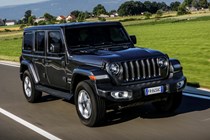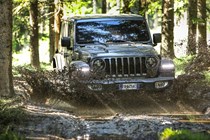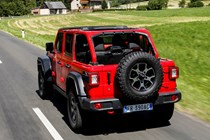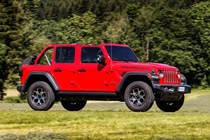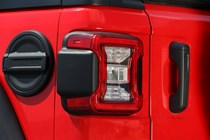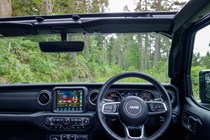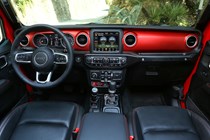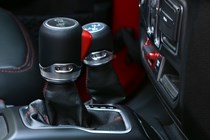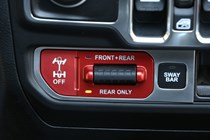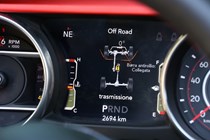Jeep Wrangler engines, drive and performance
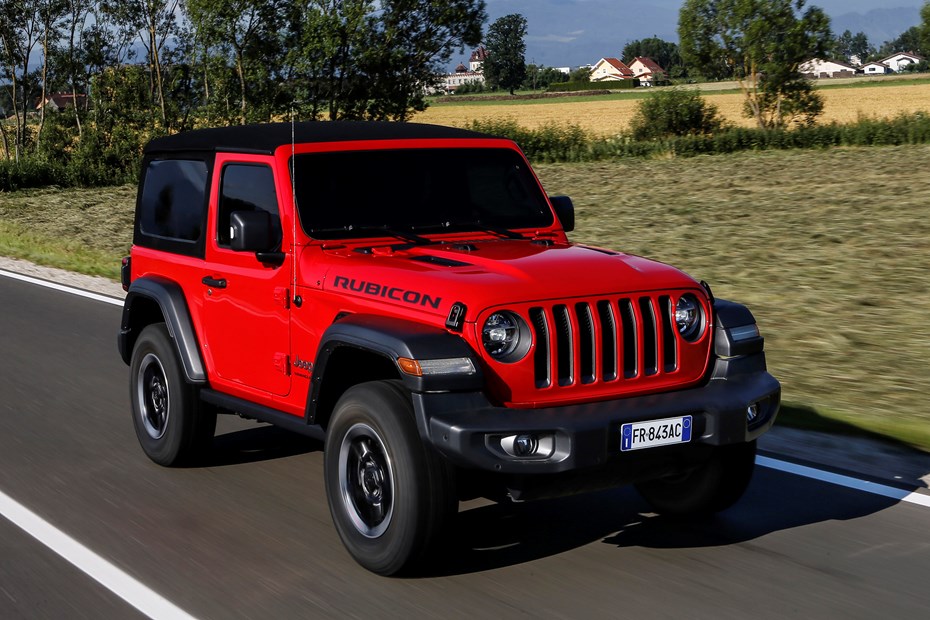
- Wrangler is petrol only for the UK now
- Previously available diesel offers respectable performance
- Automatic only, with clever all-wheel drive system
New Jeep Wrangler buyers are spared a decision-making process around the engine, as the only one available is a 272bhp turbocharged petrol. However, in previous years a choice of petrol or diesel was available, and there are plenty of nearly-new examples to choose from.
Available slightly after launch, the 2.0-litre petrol, produces 272hp and 400Nm of torque. It’s smooth, even when extended, and used in several other higher-performance cars within Stellantis, so it’s not a coarse option unlike previous Jeep petrol engines, but it’s not particularly economical. Expect around 25mpg average, and a best of 28mpg depending on Wrangler spec.
While it lacks some torque compared to the diesel, it’s an eager engine paired with a very effective gearbox. Off-road the Wrangler performs admirably; on-road, the petrol Unlimited is more than capable of passing HGVs safely and joining motorways from slip roads in absolute confidence.
The most sensible choice for many drivers, however, is the 2.2-litre turbodiesel, producing 200hp and 450Nm of torque. The 0-62mph time varies depending on the version.
- Wrangler Sahara 2-door – 8.9 seconds 0-62mph, 112mph top speed
- Wrangler Sahara 5-door – 9.6 seconds 0-62mph, 112mph top speed
- Wrangler Rubicon 2-door – 9.6 seconds 0-62mph, 99mph top speed
- Wrangler Rubicon 5-door – 10.3 seconds 0-62mph, 99mph top speed
Hit the tarmac, and this Jeep can move surprisingly quickly; the 2.2-litre 200hp diesel and eight-speed automatic gearbox work well together. The diesel is a very smooth engine, remaining refined at all times unless you’ve got your right foot planted to the floor, and it’s well-matched to the smooth-shifting eight-speed automatic gearbox. It changes gears effortlessly, and manages to swap ratios in response to the throttle remarkably well.
The diesel engine is subdued and inoffensive at speed. In town the stop-start is astonishingly eager, and the engine’s volume becomes noticeable after each absence, though totally in keeping with the Jeep’s feel when underway.
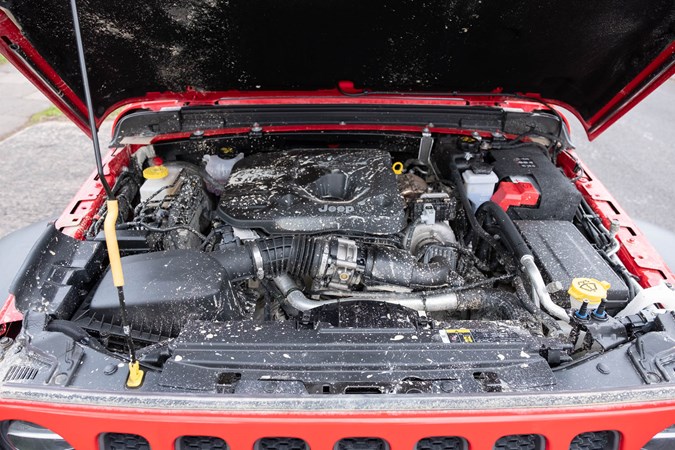
With this engine, the Wrangler doesn’t feel especially rapid, but it won’t leave you feeling like it’s running out of puff on a motorway slip road, for instance.
- On-road performance flawed
- Very detached feel for the driver
- But it’s unrivalled off-road
The Wrangler’s primary job is to offer unrivalled ability when it comes to the rough stuff, and it more than delivers when the tarmac runs out.
It’ll tackle the most treacherous of terrain with enthusiasm, leaving the driver feeling confident that it’ll get you out of some seriously sticky situations thanks to its advanced four-wheel drive system.
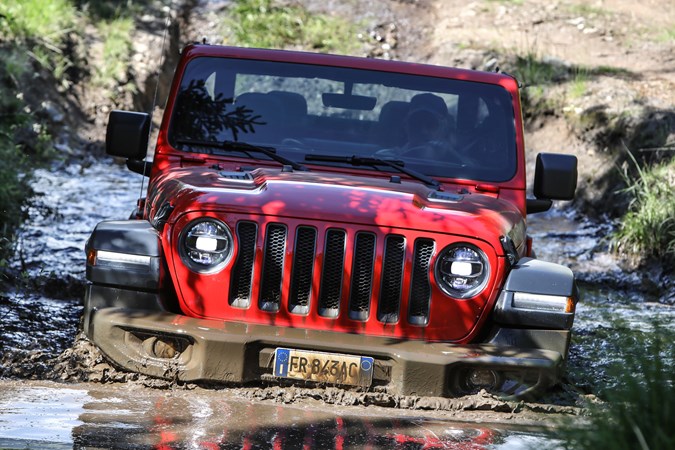
If you choose the Rubicon – the more focused off-roader of the line-up – the Wrangler comes with an off-road system called Rock-Trac that lets serious enthusiasts tackle more demanding terrain.This specification also includes raised suspension, soft, off-road friendly tyres and some very desirable kit for seriously challenging terrain. Front and rear differential locks, plus the ability to uncouple the front anti-roll bar for extra axle articulation mean any rocks or obstacles can be literally clambered over.
The sway-bar disconnect doesn’t just allow better rock crawling – it greatly improves comfort on rutted, bouncy tracks.
However, even the standard Command-Trac system found on Sport and Sahara models proves impressively adept.
If you don’t want to leave the tarmac, it’s a slightly different story. The previous-generation Wrangler was unimpressive on-road to say the least, and while this generation is a notable improvement, it’s still flawed.
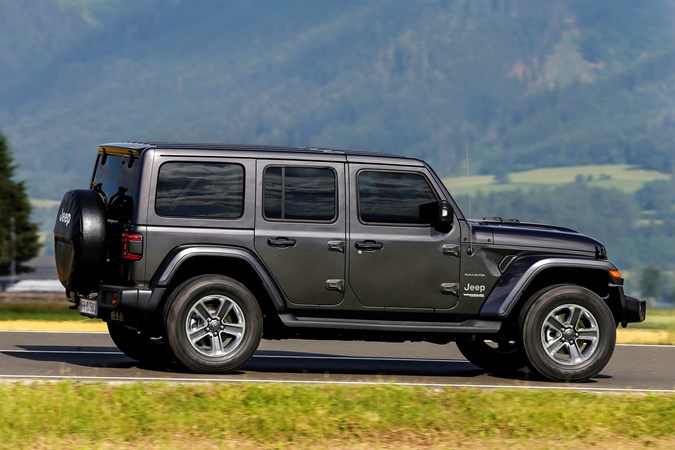
Tip the car into a bend and you’ll find yourself hauling at the steering wheel more than you originally expect, at the same time leaving you wondering which way the wheels are pointing. There’s very little sense of what’s going on at each corner, with a bit of bodyroll to go with it, as you might expect.
After a while behind the wheel, you do get used to how the Wrangler wallows, and it’s not one to be thrown around a corner too quickly. If you do attempt to drive like this, you might find yourself braking mid-corner, or flailing at the steering wheel in a bid to turn the car in more. In short, take it easy in corners.
Overall, it certainly is a big improvement, but still trails almost every other SUV, but that’s the price you pay for excellent off-road ability.
What does become tiresome on longer journeys is the inevitable slop in the steering, where constant corrections are needed – some the instinct to correct for crosswinds, some a very real need to keep the Wrangler in line as it tries to go its own way. That slack will stop you dislocating thumbs when using the off-road ability fully; and it’s surprisingly precise once under load except in the case of the Rubicon. A Hilux is better, though.


